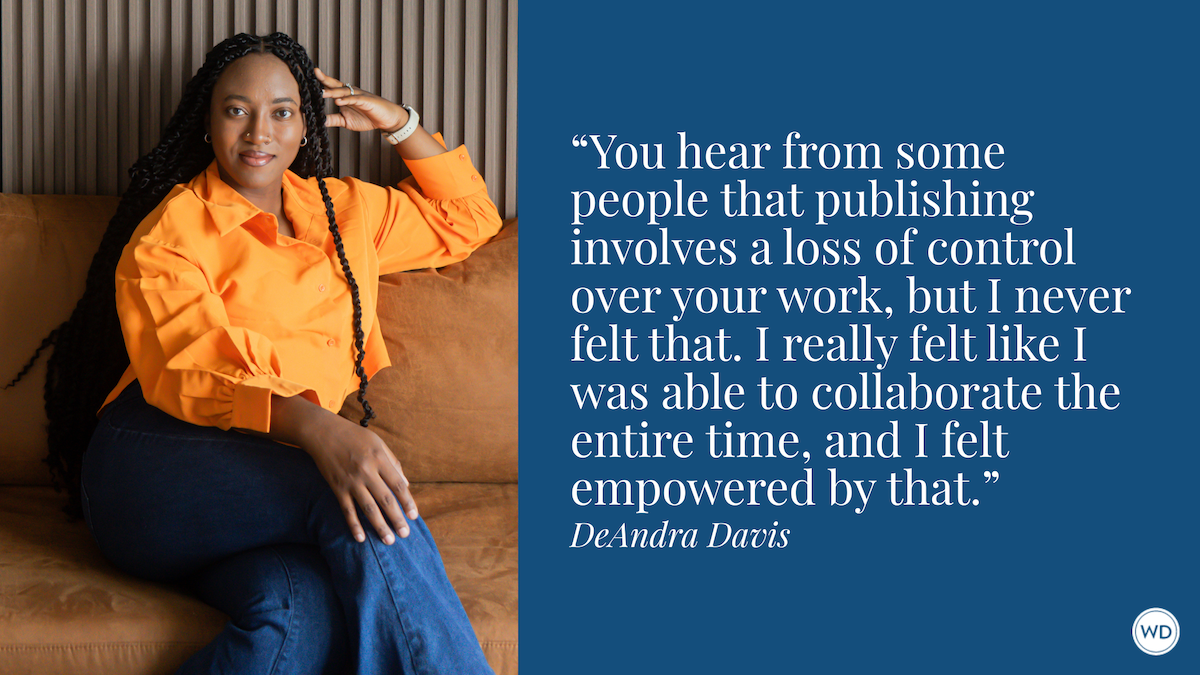Clare Pooley: On the Power of Limitations
New York Times bestselling author Clare Pooley discusses how imposing limitations allowed for more creative thinking in writing her new novel, Iona Iverson’s Rules for Commuting.
Clare Pooley graduated from Cambridge University and then spent 20 years in the heady world of advertising before becoming a full-time writer. Her debut novel, The Authenticity Project, was a New York Times bestseller, and has been translated into 29 languages.
Pooley lives in Fulham, London, with her husband, three children, and two border terriers. Iona Iverson’s Rules for Commuting is her second novel. Find her on Twitter and Instagram.
In this post, Clare discusses how imposing limitations allowed for more creative thinking in writing her new novel, Iona Iverson’s Rules for Commuting, her hope for readers, and more!
Name: Clare Pooley
Literary agent: Hayley Steed at Madeleine Milburn, London
Book title: Iona Iverson’s Rules for Commuting
Publisher: Pamela Dorman Books (Viking)
Release date: June 7, 2022
Genre/category: Feel-good fiction
Previous titles: The Authenticity Project
Elevator pitch for the book: Nobody talks to strangers on the train. But what would happen if they did?
IndieBound | Bookshop | Amazon
[WD uses affiliate links.]
What prompted you to write this book?
I spent decades commuting in London—on trains, buses, and the London Underground. I used to see the same people over and over again, but we never spoke, obviously, because the first rule of London commuting is to never talk to strangers on the train. I would give those fellow passengers nicknames and imagine what their lives were like away from our shared commute.
Then the pandemic hit, and we all ended up confined to our individual boxes for months at a time. I never expected to miss the overcrowded, smelly, time-sucking commute, but I found myself remembering it with a real sense of nostalgia. And I started to wonder what magic might have happened if I’d ever plucked up the courage to engage with any of those people on the train.
That was the thought that led to this book…
How long did it take to go from idea to publication? And did the idea change during the process?
I wrote the first draft of this story really fast, in about four months. It seemed to gain momentum as I wrote. But then I spent another eight months editing—rewriting and rewriting, adding depth and color and detail until the characters felt as real to me as my own family.
The core idea didn’t change, but—as always—the characters started to dictate their own journeys, and often surprised me. The total time from idea to publication was nearly two years.
Were there any surprises or learning moments in the publishing process for this title?
Yes—a really big one!
The truth is, whilst this is officially my second novel, it’s actually my third. I spent a whole year writing an entirely different book. It was much harder to write than my debut, and I didn’t feel the joy in the process that I’d felt previously. I worried that I’d never find that magic again.
Finally, I sent an early draft to my publishers, hoping that it was better than I thought it was, but their response was (and I paraphrase) “meh.” I knew I could fix it, but it would take months more work, and I just couldn’t get excited about the prospect. So, I binned it, and started work on an idea that had been nagging away at me, about strangers who meet on a train. And, to my great relief, I rediscovered the joy and the magic.
This experience taught me something really important: If you’re not loving the experience of writing a novel, it’s likely that people won’t love the experience of reading it. That’s not to say that it should feel easy, but it should—at least some of the time—feel exciting and miraculous.
Were there any surprises in the writing process for this book?
My biggest worry when I started writing this story was that the train setting would be limiting. More than half of the action takes place on the train itself and, for most of the book, the characters only meet each other on their commutes. Also, they get on and off at different stations, so only certain combinations of characters could meet at any one point in time. I thought that these constraints could make the writing really hard.
Actually, what I discovered was that imposing these limitations forced me to think more laterally and creatively about plot and characterization. Reducing the scope of the novel forces you to add real depth to the world in which you’re confined.
What do you hope readers will get out of your book?
I hope that this novel will give people the courage to engage with the strangers they encounter regularly. Maybe they’ll also challenge their own preconceptions, as the story shows us how wrong we can be when we judge people solely on appearances. Finally, I hope they’ll decide to “Be More Iona,” and to understand what I mean by that, you’ll just have to read to book.
If you could share one piece of advice with other writers, what would it be?
Think of the first draft of a novel as being like the sketch a landscape artist might do before layering on any paint. Its role is to show you the shape and boundaries of your story, but it’s only the beginning. Get that draft down as quickly as you can, without stressing about it too much, then—when you know what you’re dealing with—you can start adding color, detail, light, and shade.
Robert Lee Brewer is Senior Editor of Writer's Digest, which includes managing the content on WritersDigest.com and programming virtual conferences. He's the author of 40 Plot Twist Prompts for Writers: Writing Ideas for Bending Stories in New Directions, The Complete Guide of Poetic Forms: 100+ Poetic Form Definitions and Examples for Poets, Poem-a-Day: 365 Poetry Writing Prompts for a Year of Poeming, and more. Also, he's the editor of Writer's Market, Poet's Market, and Guide to Literary Agents. Follow him on Twitter @robertleebrewer.








